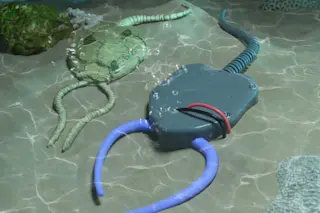An AIBO robot dog. Credit: Sony Corporation A Japanese funeral service held for broken AIBO robot dogs may seem strange in the eyes of many Westerners. Owners of AIBOs often treat their robots as beloved pets and family members rather than just machines—an openness that arises in part from Japan's cultural attitudes toward robots. But the robot funeral also reflects more universal tendencies of human psychology that go beyond Japanese culture. The memorial service for the AIBO robots took place at the 450-year-old Kofukuji temple in Isumi, Japan in January 2015, according to Agence France-Presse. Such robots are among the last of a product line made by Sony Corp. from 1999 to 2006. Sony eventually discontinued maintenance service in March 2014, which forced AIBO owners with ailing robots to seek help from repair shops that employ former Sony engineers and technicians, The Wall Street Journal reports. A group of broken-down ...
Robot Funerals Reflect Our Humanity
Explore the emotional bonds forged with AIBO robot dogs in Japan and the unique practice of robot funerals. Discover cultural perspectives!
More on Discover
Stay Curious
SubscribeTo The Magazine
Save up to 40% off the cover price when you subscribe to Discover magazine.
Subscribe













